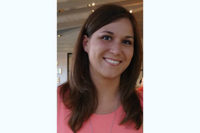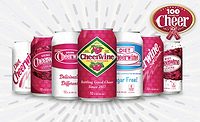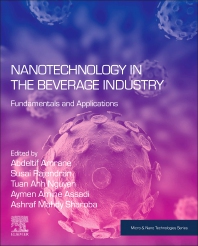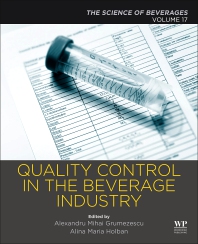Targeting demographics in beverage marketing
Identifying preferences of the most influential groups in the nation

Hispanics are the most likely of any race to consume sports drinks, Mintel reports.

Heineken USA’s new Tecate Michelada beer mix features English and Spanish language in its advertising and point-of-sale materials to target the brand’s consumer base of Hispanic men living in the United States.

Millennials consume red wine blends, like the new Chateau Ste. Michelle 2010 Indian Wells Red Blend, more than older consumers, according to Technomic Inc.

PepsiCo’s Lipton brand enlisted Lady Antebellum for its “Drink Positive” campaign to appeal to the new heartland consumer.




The United States received the name “the melting pot” in the 18th century by welcoming a diverse mixture of people into the country and melding them into one common culture. However, some would prefer to use the metaphor of a mosaic or salad bowl, which represents a number of different cultures yet retains the distinctions between them. Likewise, many consumer packaged goods (CPG) companies invest a lot of time and research into learning about their consumers and how their ethnicities, genders, values and geographic locations impact their shopping decisions. As a result, companies have the opportunity to strengthen their marketing programs to better reach these consumers.
The marketing preferences for some of these demographics reflect the general population, but other groups stand out from the crowd. For instance, Hispanics are the fastest-growing consumer group in the United States, making up 16 percent of the population, Chicago-based SymphonyIRI Group reports. The segment grew 43 percent in the last 10 years, spends nearly 8 percent more on CPGs than any other race, and is expected to hold $1.3 trillion in purchasing power this year, the market research firm adds.
“Hispanic consumers are a key growth segment, with buying power increasing 50 percent through 2015,” said Kris Licht, partner, consumer practice at McKinsey & Co., Colorado Springs, Colo., in a statement. According to the 2012 Customer and Management Channel Survey compiled by McKinsey & Co., New York-based Nielsen and the Washington, D.C.-based Grocery Manufacturers Association, the top-performing CPG companies in their categories are three times more likely to invest in high-growth retail channels and the Hispanic market.
Acknowledging the micro-segments
However, it’s important to note that Hispanic consumers should not be lumped into one large group.
“To connect with Hispanic shoppers and develop meaningful, lasting relationships, it is critical that marketers approach Hispanic shoppers with unique, targeted marketing strategies that celebrate the many micro-segments that exist within the Hispanic marketplace,” said Staci Covkin, principal of consumer and shopper insights for SymphonyIRI and author of “Diverse and Distinct: The Hispanic Population Delivers Numerous Segments and Opportunities – and an Exceptionally Fast-Growing Market,” in a statement. Findings from the publication are based on a detailed set of reports that empower CPG marketers to compare the shopping and purchasing habits and attitudes of unacculturated and bicultural Hispanics to those of more acculturated Hispanic households, as well as to the non-Hispanic population, the market research firm says.
The Hispanic population is diverse, and each segment has distinct methods of engaging with, reacting to and building relationships with CPG brands, SymphonyIRI says. Therefore, companies should recognize and respond to this diversity by accounting for factors such as country of origin,
age and life stage. According to the report, manufacturers and retailers should know that Hispanics spend 20 percent more in club stores and 36 percent more in mass merchandise outlets than the general population. Additionally, Hispanic consumers place a strong emphasis on family and nutrition. They often prefer to cook from scratch, and it also is common for entire families to shop together, which means that children can be strong purchase influencers, the market research firm notes.
Product preferences
Although Hispanics purchase brands in a wide variety of categories, there are a few beverage categories that are more popular among Hispanics than other demographics. According to Chicago-based market research firm Mintel, Hispanics are the most likely of any race to consume sports drinks, with 56 percent reporting such compared with 38 percent of Caucasian consumers, 50 percent of African-American consumers and 39 percent of Asian consumers drinking sports drinks. The popularity of sports drinks among Hispanic consumers is driven by the relative youth of the race as well as the high number of these consumers that perform manual labor jobs where sports drinks prove beneficial, the market research firm reports.
In the alcohol market, beer is most popular among Hispanics, Mintel notes. Hispanics drink 6 percent more imported beer than any other ethnicity. Additionally, they make up the largest group of tequila drinkers in the United States. More than 27 percent of Hispanics drink tequila, which is the highest percentage for any ethnic group, according to the market research firm. On the other side of the spectrum, wine is the least favorite alcohol beverage among Hispanics, with 23 percent drinking wine compared to 33 percent of the total population.
“Many U.S. Hispanics, particularly Mexicans, have not been exposed to wine in their home country, so there isn’t a wine-drinking culture or tradition,” Leylha Ahuile, senior multi-cultural analyst at Mintel, said in a statement. “However, we expect this to change in the coming years as it is already on the rise. Between 2005 and 2010, the number of glasses of wine consumed by Hispanics per month increased by nearly 50 percent. Many of these Hispanic wine consumers are second or third generation, and their level of acculturation is impacting their wine consumption habits.”
When it comes to marketing to this group, all media outlets and dual language communication are important, Mintel says. According to a Mintel report, 36 percent of Hispanics find TV commercials interesting, and 38 percent arrange their schedules around TV programs.
Laurie Demeritt, president of The Hartman Group, Bellevue, Wash., adds that some Hispanic consumers prefer to have Spanish language on the package; however, in most cases, Hispanics are not as concerned with the language on the packaging as they are with media advertising, such as TV commercials and print ads, representing their physical features.
“We know that qualitatively there is some preference among certain Hispanic consumers to have Spanish on the package, but frankly, what we’ve found is that, in many cases, what they were saying around advertising was not so much that ‘I want it to be in Spanish’ per se, but ‘I want to see people like me portrayed in some of the media advertising,’” Demeritt explains. “It was kind of a more subtle cue that I think is an interesting one.”
Nevertheless, many CPG brands feature Spanish language on products targeted at Hispanics. For instance, Global Trade Bridge Corp., New York, introduced Rica juice drinks to the U.S. market this year. Similarly, Andale! Energy Drink Co. LLC, Bakersfield, Calif., launched its same-named beverage in California this year. Both products feature Spanish language on the packaging.
Last month, White Plains, N.Y.-based Heineken USA Inc. launched Tecate Michelada, an authentic ready-to-drink beer mix that follows the traditional michelada recipe.
“Beer mixes are growing in popularity among Mexican consumers in the U.S. and have shown sustainable growth over the past three years,” said Felix Palau, vice president of marketing for Tecate, in a statement. “This new product line is perfect for consumers that feel like having a beer that has a little something extra and is ready to be enjoyed on the spot.”
To promote the launch of the new product, the brand partnered with creative agency Olabuenaga Chemistri to develop an out-of-home advertising campaign for select U.S. markets.
“The transit shelters and bulletins, for example, boldly celebrate the authenticity and full flavor of Tecate Michelada by showcasing the 16-ounce can surrounded by the key ingredients that make up its complex profile: cerveza, spices, lime and salt,” Palau explains. “It was also important for us to develop specific [point-of-sale] (POS) elements for our in-store marketing efforts across the western and central regions of the U.S.”
The brand collaborated with Dieste to develop POS materials, including floor and cooler decals, wobblers, shelf strips and a suction cup holder that enables retailers to display individual cans inside coolers, she says. All of the advertising and POS materials feature English and Spanish text to target the brand’s consumer base of Hispanic men living in the United States, she adds.
“CPG companies that win with Hispanics focused on tailored products and marketing, created better in-store experiences with retailers, and increased Hispanic-focused resources and capabilities,” McKinsey & Co.’s Licht said in a statement.
Getting digital
When it comes to digital media, there are several groups — including Hispanics — that are highly influenced. Hispanic and African-American consumers are more likely to research and purchase products online than other races, The Hartman Group’s Demeritt says. The general population searches online for items at a rate of 28 percent, whereas the rate for African-Americans goes up to 44 percent, and the rate for Hispanics is 36 percent, she adds.
“Our guess is that, especially for the Hispanic consumers, there may be products that they’ve traditionally used that are more based on cultural or historical reasons that they may not know if they can find it at a mainstream grocery store, so they’re more likely to be looking for it online,” Demeritt explains.
Hispanic consumers also are significantly more likely to indicate that Facebook and Twitter might be ways to connect with them, she says. Approximately 36 percent of Hispanics say Facebook would be a good way for companies to connect with them, and 12 percent say Twitter is a good way to reach them. Although these numbers aren’t large, they are statistically higher than what the general population says, she reports.
African-American consumers also indicate that Facebook and Twitter are good ways to connect with them but also include email and text messaging, Demeritt says. Fifty percent of the general population says email is a good way for companies to connect with them, whereas 62 percent of African-Americans see email as a good communication vehicle, she explains.
“This is showing for some of the new media [that] there is a likelihood that both Hispanic and African-American consumers are more likely to consider those good vehicles than the general population and, in particular, Caucasian consumers,” Demeritt says.
Similarly, millennial consumers — between the ages of 18 and 29 — are highly likely to rely on social media for insight and opinions; however, they prefer traditional retail stores for making purchases, according to a report by RedPrairie Corp., Atlanta. Despite this preference for in-store purchases, the report notes the need for retailers and manufacturers to be present everywhere, including online, via quick-response codes at retail, mobile apps, social media and other channels.
“When it comes to trying to satisfy millennials, the bottom line for brands is adaptability,” said David Bruno, director of corporate messaging at RedPrairie, in a statement. “One minute they want to shop and compare online and via every social networking site available, and the next they want to purchase in-store. Retailers essentially need to provide ‘endless aisle’ capabilities in every channel and location. When marketing to millennials, retailers and brands must strike a balance between personalizing the shopping experience via individualized product information and not overwhelming or overstepping perceived boundaries of privacy. It’s a challenge to meet these seemingly conflicting expectations, but with the right technology and integration in place, it’s achievable.”
Driving innovation
Although Hispanic consumers are the fastest-growing group in the United States, millennials make up the largest generation next to baby boomers and are responsible for driving most of the innovation in the beverage industry, according to Chicago-based Technomic Inc. By 2018, millennial consumers will all reach legal drinking age in the United States, and they’re already making their mark on the adult beverage market, the company says. Millennial consumers are responsible for driving trends such as craft beer, boutique spirits and sweeter flavor profiles in wine, it explains. They consume domestic light beer, hard ciders, cocktails, red wine blends and Moscato wines more often than older consumers, the company adds.
According to Technomic, this generation is more likely to try new drinks than members of any other generation in both on- and off-premise locations.
“Millennials are absolutely driving some of the biggest trends in adult beverage and will continue to do so for the next few years,” said David Henkes, vice president at Technomic and leader of its adult beverage practice, in a statement. “We do see, however, that this is not a homogenous group. Due to its sheer size and inherent diversity, beverage professionals from suppliers and marketers to retailers and restaurateurs must be very strategic in engaging millennials in terms of adult beverage occasions and consumption.”
For instance, teaching millennials about new brands, flavors and cocktails at on-premise locations is more important than ever for the younger generation, Henkes explains.
“When you’re talking about new flavors, part of it is just building variety into your menu, part of it is perhaps sampling, part of it could be flights and having an alluring back story to your cocktail menu — things that make your drink list and your drink selections more interesting and give millennials a reason to experiment, because they are much more likely to experiment than some of the other generations,” Henkes says.
Furthermore, because they’re much more social media savvy than past generations, it’s also important for operators to have a social media marketing strategy in order to reach them, he says.
New consumer segment
In addition to prominent consumer groups including Hispanics and millennials, a new consumer segment has been identified. The “heartland” consumer group is made up of 60 percent of U.S. consumers and is underserved and overlooked by most brands, according to Paul Jankowski, chief strategist at consumer engagement agency Access Brand Strategies, Brentwood, Tenn., and author of “How to Speak American.”
“Many branding decision-makers disregard the cultural nuances of the new heartland and fail to create campaigns that ‘speak American,’ or are culturally relevant to this segment,” Jankowski said in a statement. “A lot of agencies and clients apply a one-size-fits-all strategy because they don’t know this segment and, in many cases, are afraid to immerse themselves in a culture that’s foreign to them.”
New heartland consumers reside in the Midwest, Southwest and parts of the Southeast and are bound together by a core set of values including faith (not religion), community and family, he explains.
“Beverage brands need to be very cognizant of how they communicate with the new heartland,” Jankowski says. “… [T]here’s certain cultural nuances that make the way you message very important and how you can create measurable results, so I would just keep those in mind — those cultural nuances. I would make sure you understand that the new heartland is an amalgamation of several cultures, but again, the core value piece plays in there, so you’ve got to be culturally relevant.”
PepsiCo, Purchase, N.Y., aligned itself with celebrity personalities to help tell its story and appeal to new heartland consumers. For example, the company enlisted Grammy award-winning trio Lady Antebellum to represent Lipton’s “Drink Positive” ad campaign. The band is featured in national TV spots that highlight 100 percent Natural Lipton Iced Tea and new Lipton Tea & Honey iced tea mixes. Additionally, Lady Antebellum and Lipton created behind-the-tour webisodes, which feature the band engaging in a series of challenges to determine which member knows his or her bandmates best. The campaign also includes a Facebook sweepstakes as well as print, radio, digital and retail integrations.
“Lady Antebellum is the voice of the new heartland, home to generations of Lipton lovers,” said Marc Hanson, brand director for Lipton, in a statement. “They were the perfect match to represent the positive spirit of the Lipton brand and bring the campaign to life.” BI
Looking for a reprint of this article?
From high-res PDFs to custom plaques, order your copy today!













